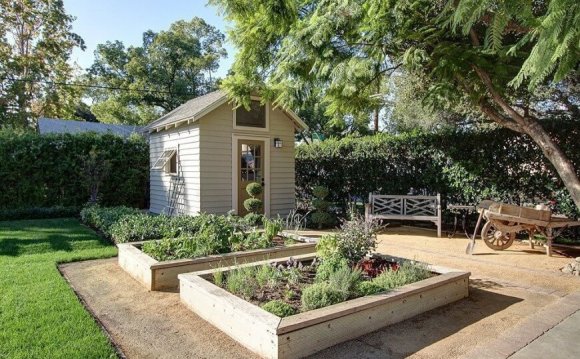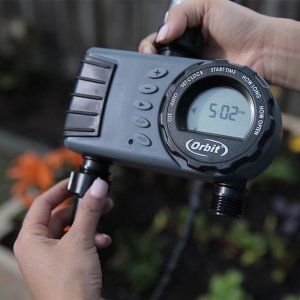

Good to Know
A timer on a soaker hose can make a simple task like watering even easier.
Raised Garden Bed Options
Consider adding a mesh cover to keep birds and rabbits away. You can build the frame with wood and PVC pipes. You can also add a trellis next to the bed for vines and tall plants.
If you want to get an early start on gardening or keep things growing later in the season, cover the mesh frame with plastic to protect the plants from cooler temperatures.
What Type of Wood Do I Use?
The wood to use for a raised bed is your decision. Here are some options:
Cedar and redwood are naturally water-resistant but can be expensive and hard to find. Hemlock, fir and pine are suitable materials for raised beds but aren't very long-lasting.
Pressure treated lumber is an option. Pressure treated lumber has been a controversial topic for many years. The purpose for chemical pressure treatment is to protect wood from rot, decay and wood-ingesting insects. Chromated copper arsenate (CCA) was the most controversial treatment and was banned for consumer use by the Environmental Protection Agency in 2003. Current treatments such as alkaline copper quaternary (ACQ) are deemed low-risk by the EPA and designated safe for use around humans, pets, plants and vegetables. Creosote-treated wood is not a good option for vegetable raised beds.
Compared to untreated wood, pressure treated lumber lasts longer and is available at a comparable cost. Some types are specifically treated for ground contact. But keep in mind that even water-based treatments such as ACQ contain the fungicide and pesticide necessary to make it effective. Here are some practices that may address concerns about using it in raised beds.
- Let the wood dry before use. It can take six months or longer for treated lumber to dry. You can then use as-is or paint or seal it.
- Line the interior sides of the bed with sheet plastic or pond liner.
- Plant edibles nearer the center of the bed, a few inches away from the wood.
Follow these guidelines and safety precautions anytime you use pressure treated lumber:
Guidelines
- Use fasteners and hardware labeled for treated lumber — stainless-steel or hot-dipped, galvanized screws.
- Butt lumber tightly. Pressure treated wood shrinks as it dries.
- Drill pilot holes to prevent splitting when nailing or screwing boards.
- Use wood rated for ground contact when necessary for the project.
Safety
- Wear gloves, a dust mask and eye protection when handling or cutting wood.
- Wash your hands after working with treated wood.
- Dispose of sawdust and waste according to local regulations.
- Don't burn pressure treated wood.















